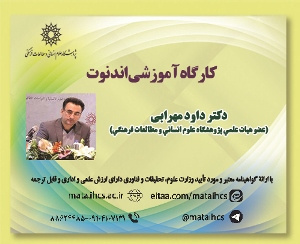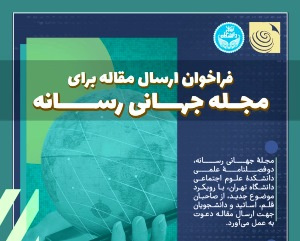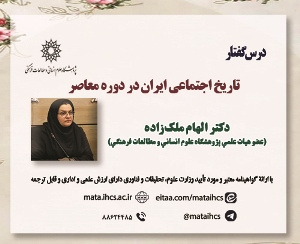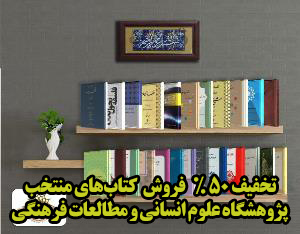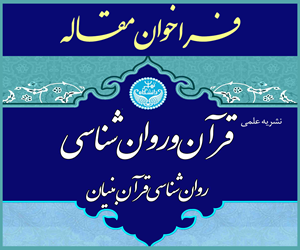نظریه تجلی؛ در شرح شمایل گریزی هنر اسلامی و شمایل گرایی مسیحیت و هندوئیزم (مقاله علمی وزارت علوم)
درجه علمی: نشریه علمی (وزارت علوم)
آرشیو
چکیده
موضع دین اسلام در باب شمایل ها چیست؟ مذاهبی همچون مسیحیت، هندوئیزم و بودیزم (از مذاهب مهم جهان امروز) شمایل گرا هستند و شمایل قدیسین و اولیای مذهبی خود را می پرستند؛ با این حال، به نظر می رسد دین اسلام دیدگاه کاملاً متفاوتی در این زمینه دارد. تردیدی نیست اسلام از آغاز ظهور خویش تاکنون، روی خوشی به شمایل ها نشان نداده است و گرچه در برخی از دوره های تاریخی، شمایل پیامبر(ص) و حضرت علی(ع) در برخی آثار هنری ظاهر شد، این موضوع هرگز به قاعده تبدیل نشد. این مقاله با روش تحلیلی- تأویلی به بررسی تطبیقی چهار مذهب در موضوع شمایل ها می پردازد و رجوع به منابع مقدس این مذاهب گام اول بوده است؛ منابعی همچون قرآن، تورات، اناجیل اربعه، بهگودگیتا و برخی مراجع بودیسم. مبنای پژوهش نیز مسئله بنیادی تجسد1 یا به تعبیر سانسکریت، آواتار است. مسیحیت، بودیزم و هندوئیزم به تجسد اعتقاد دارند؛ بنابراین اگر «امر مطلق» در این مذاهب، در صورت بشر ظاهر شده است، چرا بازنمایی آن در شمایل ها حرام باشد؟ اما در قرآن هیچ اثری از تجسد نیست و حتی هنگامی که حضرت موسی(ع) از خدا می خواهد تا خود را بر او بنمایاند، با جواب «هرگز مرا نخواهی دید» مواجه می شود. اسلام تجسد را باور ندارد؛ بنابراین، روی خوشی به شمایل ها نشان نمی دهد. این در حالی است که در مذاهبی که تجسد اصلی بنیادی است، شمایل ها مقدس شمرده می شوند.Manifestation theory; incarnation in Christian and Hinduism Art, Manifestation in Islamic Arts*
Incarnation theory is one of the most important Christian and Hinduism theological teachings. According to this theory, God as the most Supreme Being incarnates in human appearance. In chapter 11 of Bhagavad Gita (as a part of Mahabharata which is the greatest poem book of wisdom among Hindus), Arjuna asks Krishna (as the 8th avatar of Vishnu) to show him his real and divine face and Krishna who is serving him as a charioteer (in a human form), reveals his real face to him. In Christianity as well, God becomes incarnate on Jesus based on the first verses of Gospel of John. For this reason, visual arts like iconography, architecture and sculpture are sacred in these religions. In Islam, however, according to the verses of holy Quran, “You can never see me”, what God replies once Moses asks Him the same request of Arjuna in Bhagavad Gita, one cannot see God. In this paper, incarnation means appearance of God in a human form. In other words, God is manifest in human flesh. But manifestation just stays opposite to incarnation and stands for appearance of God in signs. For this reason, various parts of Quran are named "verse" (Aieh) or actually signs. Therefore, in comparative study of Christianity and Hinduism to Islam we realize that in Islam, Absolute Quality (God) is never manifest in any form and no incarnation takes place. In return, God speaks of manifestation in The Heights Surah of Quran. This paper believes that the two different replies to the same request of humans to see God have been the reason for visual arts becoming sacred in some religions like Hinduism and Christianity and iconography which remain in shadow in Islam. While dealing with this issue in the present paper, we try to shed light on differences between Islamic arts on the one side and Christian and Hinduism art on the other. Manifestation of God on the mountain indicates necessity of paying attention to mediators in observing God. In Islamic art, symbols are the very mediators functioning the way the verses of holy Quran do and it should not be overlooked that the word verse in Arabic language means sign. Islamic typology deems the entire universe full of evidence testifying a cause like God. Manifestation principle in Islamic thoughts calls us for observing a view of Divinity’s views in which God has a mirror-like presence. In addition to the hearts of mystics in their mystical experience, this kind of observation has been manifested in Islamic art and architecture leading to creation of an art indebted to world of imagination and its manifestations. In this way, Islamic art is manifestation of manifestation because it takes its essence from a universe that is itself a mirror of a farther universe. The main concept of this paper is to put forward theory of manifestation instead of theory of incarnation. The present paper is based on a historical-analytical methodology in which the attitudes of three great religions on art are comparatively discussed. This paper aims to explain that theology of a variety of religions has a great effect on the form and nature of such religions.
